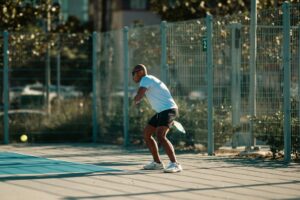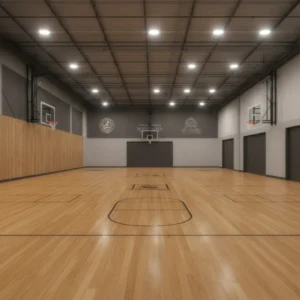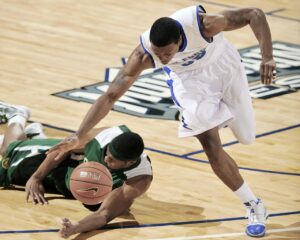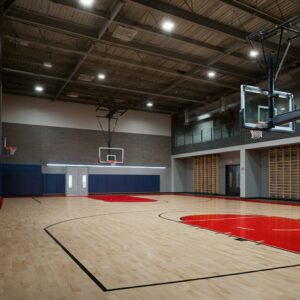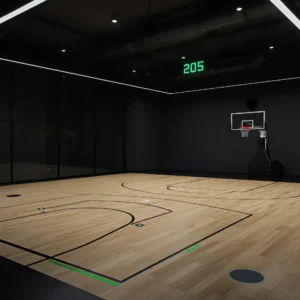If you’re building or upgrading a pickleball court, the type of flooring you choose can make all the difference. The court’s surface impacts everything—from ball bounce to player safety and long-term maintenance. With the sport gaining immense popularity, court owners, pickleball enthusiasts, and facility managers alike are asking a common question:
What’s the best flooring for pickleball—wood, synthetic, or rubber?
This guide dives deep into these options to help you make an informed decision. We’ll analyze each material’s pros, cons, and suitability, highlight real-life case studies, and provide a detailed cost breakdown. Whether you’re creating a professional court or upgrading a recreational one, this post will answer your most pressing questions.
Why Flooring Matters for Pickleball Courts
Pickleball is a fast-paced game that relies on precision, consistency, and player agility. The quality of the flooring isn’t just about aesthetics—it’s about enhancing gameplay and ensuring player comfort and safety. Here’s why proper court flooring is essential:
- Ball Behavior: A solid, consistent surface ensures an accurate ball bounce essential for competitive play.
- Player Safety: Courts with shock absorption reduce stress on joints and mitigate the risk of injuries.
- Durability: Quality materials can withstand frequent use, weather changes, and heavy foot traffic.
- Maintenance: Long-lasting, low-maintenance surfaces save costs over time.
Now, let’s explore the three major flooring options for pickleball courts.
Wood Flooring for Pickleball
Pros of Wood Flooring:
- Aesthetic Appeal: Wood flooring provides a classic, gym-like appearance with a premium feel.
- Consistent Ball Bounce: Players enjoy reliable ball behavior, enhancing gameplay.
- Environmentally Friendly: If sourced responsibly, wood flooring is a sustainable choice.
Cons of Wood Flooring:
- Limited Outdoor Use: Wood is susceptible to moisture, rain, and humidity, making it unsuitable for outdoor courts.
- Maintenance-Intensive: Requires regular refinishing and is prone to warping or termites.
- Higher Costs: Wood installation and upkeep can be more expensive than other alternatives.
Best For:
Indoor courts in controlled environments, particularly for clubs or professional facilities aiming for premium aesthetics.
Synthetic Flooring for Pickleball
Pros of Synthetic Flooring:
- Customizable: Comes in a wide array of colors and designs to match your facility’s brand or style.
- Shock Absorption: Reduces player fatigue and improves comfort during extended play.
- Durable: Resistant to wear and tear, making it a long-lasting solution for high-traffic courts.
- All-Weather Usability: Synthetic flooring materials like Copo Sports’ Macwood Pro offer outdoor performance without compromising the hardwood feel.
Cons of Synthetic Flooring:
- Cost Variability: High-quality synthetic flooring can be costly, though it is often worth the investment.
- Heat Sensitivity: Certain synthetic materials may feel warm under direct sunlight, depending on the installation.
Best For:
Both indoor and outdoor courts, especially for multi-purpose sports facilities focused on longevity and performance.
Rubber Flooring for Pickleball
Pros of Rubber Flooring:
- Safety Features: Superior cushioning and slip resistance enhance player safety.
- Noise Reduction: Absorbs sound effectively, making it an ideal choice for indoor facilities.
- Impact Absorption: Reduces stress on joints, making it perfect for beginner players or older demographics.
Cons of Rubber Flooring:
- Limited Competitive Use: The softer surface doesn’t offer the consistent ball bounce required for tournament-level play.
- Aesthetic Constraints: Lacks the premium look of wood or synthetic options.
- Maintenance: Rubber can attract dirt easily and requires regular cleaning.
Best For:
Indoor recreational courts or home setups prioritizing player comfort and safety over competitive play.
Comparison Table for Pickleball Flooring Options
| Feature | Wood Flooring | Synthetic Flooring | Rubber Flooring |
|---|---|---|---|
| Aesthetic Appeal | High | Customizable | Moderate |
| Ball Bounce Consistency | High | High | Moderate |
| Shock Absorption | Moderate | High | High |
| Durability | Low to Moderate | High | Moderate |
| Maintenance | High | Low | Moderate |
| Indoor/Outdoor Use | Indoor Only | Both | Indoor Only |
| Best For | Competitive Indoor Play | All-around Play | Recreational Indoor Use |
Expert Opinions
According to Copo Sports, innovators in premium sports flooring solutions, their Macwood Pro synthetic flooring delivers “the authentic hardwood court experience—even outdoors.” It combines the durability of synthetic materials with the aesthetic and performance characteristics of wood.
On the other hand, Copo-Dura Interlocking Tiles, made of hard polypropylene, are ideal for budget-friendly courts while still maintaining high performance in terms of ball bounce and durability.

Installation and Maintenance Guidelines
- Wood Flooring: Requires careful installation in controlled environments. Regular refinishing is necessary to maintain quality over time.
- Synthetic Flooring: Offers easier installation, especially with interlocking tiles. Periodic cleaning with simple equipment suffices for maintenance.
- Rubber Flooring: Installation requires expert alignment to prevent uneven surfaces. Regular cleaning maintains its slip resistance.
Cost Analysis
When it comes to cost, synthetic flooring like Macwood Pro strikes a balance between upfront investment and long-term value. While wood flooring tends to have higher installation and maintenance costs, rubber flooring is typically more affordable but less versatile.
- Upfront Costs: Wood > Synthetic > Rubber
- Maintenance Costs: Wood > Rubber > Synthetic
- Long-Term Value: Synthetic > Wood > Rubber
Elevate Your Pickleball Court
Choosing the right flooring for your pickleball court is about balancing performance, durability, and budget. For all-around performance, synthetic surfaces like Macwood Pro are unmatched in providing a premium experience. Meanwhile, rubber flooring is perfect for recreational indoor spaces, and wood delivers style and performance for controlled environments.
Still unsure about the best option? Contact us for a free consultation. Our experts at Copo Sports are here to guide you through every step, from selection to installation.


